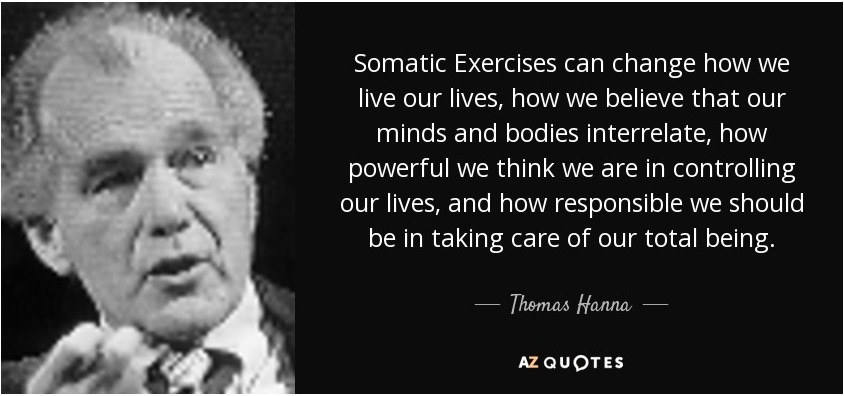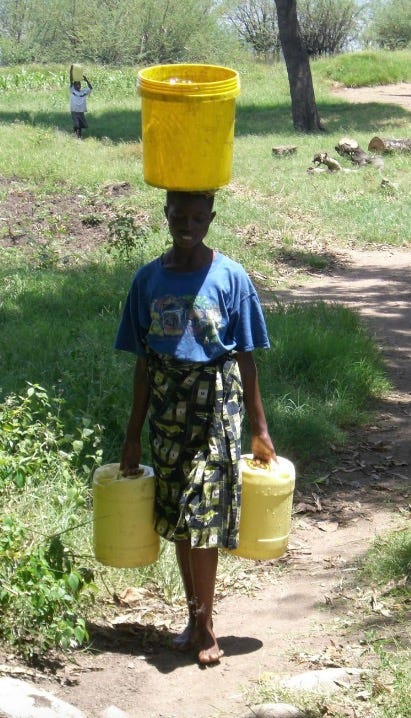Gentle Yoga with Hanna Somatics

What is Hanna Somatics?
Hanna Somatics is a movement therapy invented by Thomas Hanna. Hanna was a student of Moshe Feldenkrais (another movement specialist); who in turn was a student of F.M. Alexander (who devised the Alexander Technique). Hanna Somatics seems at first to be similar to gentle yoga. However the principles are very different, but complementary.
Hanna Somatics is concerned with improving and maintaining health in the body. It helps us to adapt to what life brings, whether that is chronic health conditions, injuries, stiffness and old age. Funnily enough, these are many of the reasons why people come to yoga class.

Finding Centre
I’ve always wondered why our bodies don’t revert back to alignment around the central axis. This axis runs though the centre of our skull, ribcage and pelvis,. An efficient skeletal structure is clearly organised around this centre. However, as F. M. Alexander established our “sense” of where our centre is, is more often than not way off our actual centre. What we think of as “being centred” is usually leaning forwards, backwards, to the right or left. More often we think of centre as a combination of all four with a twist in there for good measure!
In sedentary cultures, we don't use our bodies that much. And when we do, we often have an end in mind, which prevents us from paying attention to how we are using our bodies. Moving with more awareness helps us to co-ordinate our muscles better. This leads to better posture and more efficient movement.
Body Awareness and Myofascia
In a simplification of how our nervous system works we have motor nerves (which transmit messages from the brain, via the spinal cord to the myofascia). And we have sensory nerves (which relay back to the brain, information from the myofascia). Myofascia is a more modern term than muscle, which communicates the intertwined nature of muscles and facia. It conveys the fact that muscles do not act as compartmentalised, separate units. Instead, they are joined in a continuous neurologically connected web, which joins up every bone, muscle, organ, nerve and blood vessel. Hanna realised that we have large areas of our myofascial system that suffer from “faulty wiring”.
Sensory-Motor Amnesia
Due to injury or lack of movement, the communication through the motor and/or sensory nerves becomes impaired. When we injure ourselves our natural reaction is to reduce the movement to the area. Our sensory and motor nerves are dialled down to help this process. This is helpful in the case of serious tissue damage like deep cuts and broken bones. However, even when the injury was serious, we do need to get moving again once the tissues are healed. In addition, when we spend long periods of time in one position (sitting at a desk for instance) our brain reduces communication to and from those areas that are immobile. The brain does this to save energy. Unfortunately, there appears to be no mechanism that turns the sensory-motor communication back up to its original level. This leaves areas of our body with less “awareness” and “control” Hanna called this sensory-motor amnesia or SMA for short. We can have areas of SMA throughout our body. Hanna Somatics help us to discover these areas and re-connect them to the nervous system. The exercises also help us to maintain (as well as re-gain) sensory motor control.

Tuning Up Our Body – Pandiculation
Hanna pondered this at length and he realised that other mammals do not seem to get as affected by stress and injury as us humans. One of many reasons for this, is that other mammals regularly pandiculate.
Pandiculation is another word for “yawning”, the kind of stretching you might have enjoyed lying in bed in the morning as a child and teenager. It also describes the beautiful stretching that cats, dogs and other mammals do, when they transition from rest to activity. In contrast to static stretching, which doesn’t give much information to the brain pandiculation lights up the brain. This type of ”stretching” has the potential (unlike static stretching) to change the amount of tone that the muscle is holding. Using pandiculation we can lengthen a chronically contracted muscle and change it’s resting state. Specifically targeted pandiculation can be of enormous help in lengthening tightened muscles that contribute to back and joint pain for many people.

Reflexes
Thomas Hanna noticed three main postural tendencies in people. He called them Green Light; Red Light and Trauma Reflexes. Green light involves over arching in the lower back and neck and is associated with the “flight or flight” stress response. Red Light involves rounding the lower back and letting the head come forward, concaving the chest. This is associated with the “freeze” stress response. Trauma is created when we have an injury or habitually misuse or underuse an area (carrying a heavy bag on one shoulder for instance). This creates an asymmetrical hike, drop or twist in our skeletal system (for instance in scoliosis or when one shoulder is higher than the other).
Creating Length and Space in Your Skeletal Structure
Attending a Holistic Yoga with Hanna Somatics class will help you to understand your posture and move towards finding your own centre. As you learn the exercises you'll find relief from back, neck, shoulder, knee and hip pain. This is simply due to the fact that we are off loading our joints by giving them more space. If you suffer from joint or back pain, why not give it a try?

